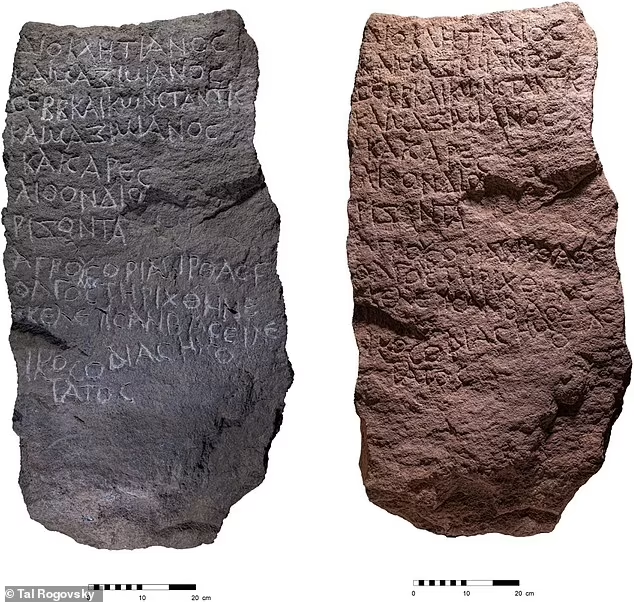Archaeologists in Upper Galilee have unearthed an extraordinary artifact that sheds new light on the reach of the Roman Empire, revealing two previously unknown settlements. The discovery, a basalt slab carved with Ancient Greek inscriptions, indicates that the empire’s control extended further into the region than was previously understood.
The artifact, a boundary stone used to mark land divisions, names two Roman towns, Tirathas and Golgol, and mentions four governors responsible for administering the empire’s territories abroad. Dated to 1,720 years ago, the inscriptions are from the reign of Caesar Marcus Aurelius Alexander, famously portrayed in the movie Gladiator.
The stone was found at Abel Beth Maacah, an ancient city in Upper Galilee, a region steeped in religious significance. This area is believed to be where Jesus preached, performed miracles, and was baptized. Its discovery offers not only historical insights into Roman governance but also a deeper connection to the life and times of those who lived during this period.
Professor Uzi Leibner, part of the team from Hebrew University, highlighted the artifact’s importance. “Finding a boundary stone like this not only sheds light on ancient land ownership and taxation but also provides a tangible connection to the lives of individuals who navigated these complex systems nearly two millennia ago,” he explained.
The names Tirathas and Golgol, carved into the stone, are not known from any other historical sources or artifacts. However, researchers speculated on their possible locations. The name Tirthas closely resembles Kh. Turritha, a site documented in the 19th century near the Lebanese border, described as large heaps of basalt stones.
The location of Golgol remains less certain. Researchers suggest it might be linked to the biblical sites of Gilgal or Golgotha due to similarities in name and context. Gilgal is mentioned in the Book of Joshua as the Israelites’ camp after crossing the Jordan River, while Golgotha is known as the site of Jesus’ crucifixion.
The basalt stone itself, a type of dark volcanic rock, underscores the connection to the region’s geological features. This find is part of a unique collection of over 20 boundary stones discovered in the northern Hula Valley, a region once under heightened Roman administrative control. These markers reflect the empire’s efforts to define land ownership and streamline taxation during a period of significant political and economic activity.
This latest discovery reinforces the enduring legacy of the Roman Empire in shaping the historical and cultural landscapes of the Middle East, while also offering a rare glimpse into the lives of those who lived under its rule.


